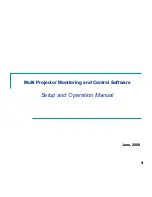
Using the Null Interface
You can use access control lists to filter undesired traffic. Another way to handle undesired
traffic is to send it to the null interface. The router automatically creates the null interface,
which is always up, cannot be deleted, and acts as a data sink. In other words, the null
interface cannot forward or receive traffic. However, the CLI does allow you to access
the null interface.
The E Series router creates the null interface by default; you do not have to manually
create it. You can direct traffic to the null interface by specifying the
null 0
keywords
instead of a next-hop or destination address when you configure routes.
interface null
•
Use to access the null interface.
•
The null interface is a data sink; it does not accept or forward traffic.
•
Although you can access the null interface, you cannot configure any values for it or
delete it.
•
Example
host1(config)#
interface null 0
host1(config-if)#
•
There is no
no
version.
•
See interface null.
ip route
•
Use to configure a static route and redirect traffic from it to the null interface.
•
Example
host1(config-if)#
ip route 10.10.20.5 null 0
•
Use the
no
version to remove the static route.
•
See ip route.
Prefix Lists
A prefix list is a sequential collection of permit and deny conditions that apply to IP or
IPv6 addresses. Like an access list, the router tests addresses one by one against the
conditions in a prefix list. The first match determines whether the router accepts or rejects
the address. Because the router stops testing conditions after the first match, the order
of the conditions is critical. If no conditions match, the router rejects the address. An
empty prefix list results in an automatic permit of the tested address.
Unlike access lists, the prefix list specifies a base IP or IPv6 address and a length (the
number of bits applied to the base to determine the network prefix). The tested address
is matched against the prefix.
Copyright © 2010, Juniper Networks, Inc.
32
JunosE 11.2.x IP Services Configuration Guide
Summary of Contents for JUNOSE 11.2.X IP SERVICES
Page 6: ...Copyright 2010 Juniper Networks Inc vi...
Page 8: ...Copyright 2010 Juniper Networks Inc viii JunosE 11 2 x IP Services Configuration Guide...
Page 18: ...Copyright 2010 Juniper Networks Inc xviii JunosE 11 2 x IP Services Configuration Guide...
Page 22: ...Copyright 2010 Juniper Networks Inc xxii JunosE 11 2 x IP Services Configuration Guide...
Page 28: ...Copyright 2010 Juniper Networks Inc 2 JunosE 11 2 x IP Services Configuration Guide...
Page 116: ...Copyright 2010 Juniper Networks Inc 90 JunosE 11 2 x IP Services Configuration Guide...
Page 144: ...Copyright 2010 Juniper Networks Inc 118 JunosE 11 2 x IP Services Configuration Guide...
Page 230: ...Copyright 2010 Juniper Networks Inc 204 JunosE 11 2 x IP Services Configuration Guide...
Page 262: ...Copyright 2010 Juniper Networks Inc 236 JunosE 11 2 x IP Services Configuration Guide...
Page 294: ...Copyright 2010 Juniper Networks Inc 268 JunosE 11 2 x IP Services Configuration Guide...
Page 328: ...Copyright 2010 Juniper Networks Inc 302 JunosE 11 2 x IP Services Configuration Guide...
Page 345: ...PART 2 Index Index on page 321 319 Copyright 2010 Juniper Networks Inc...
Page 346: ...Copyright 2010 Juniper Networks Inc 320 JunosE 11 2 x IP Services Configuration Guide...
Page 356: ...Copyright 2010 Juniper Networks Inc 330 JunosE 11 2 x IP Services Configuration Guide...
















































